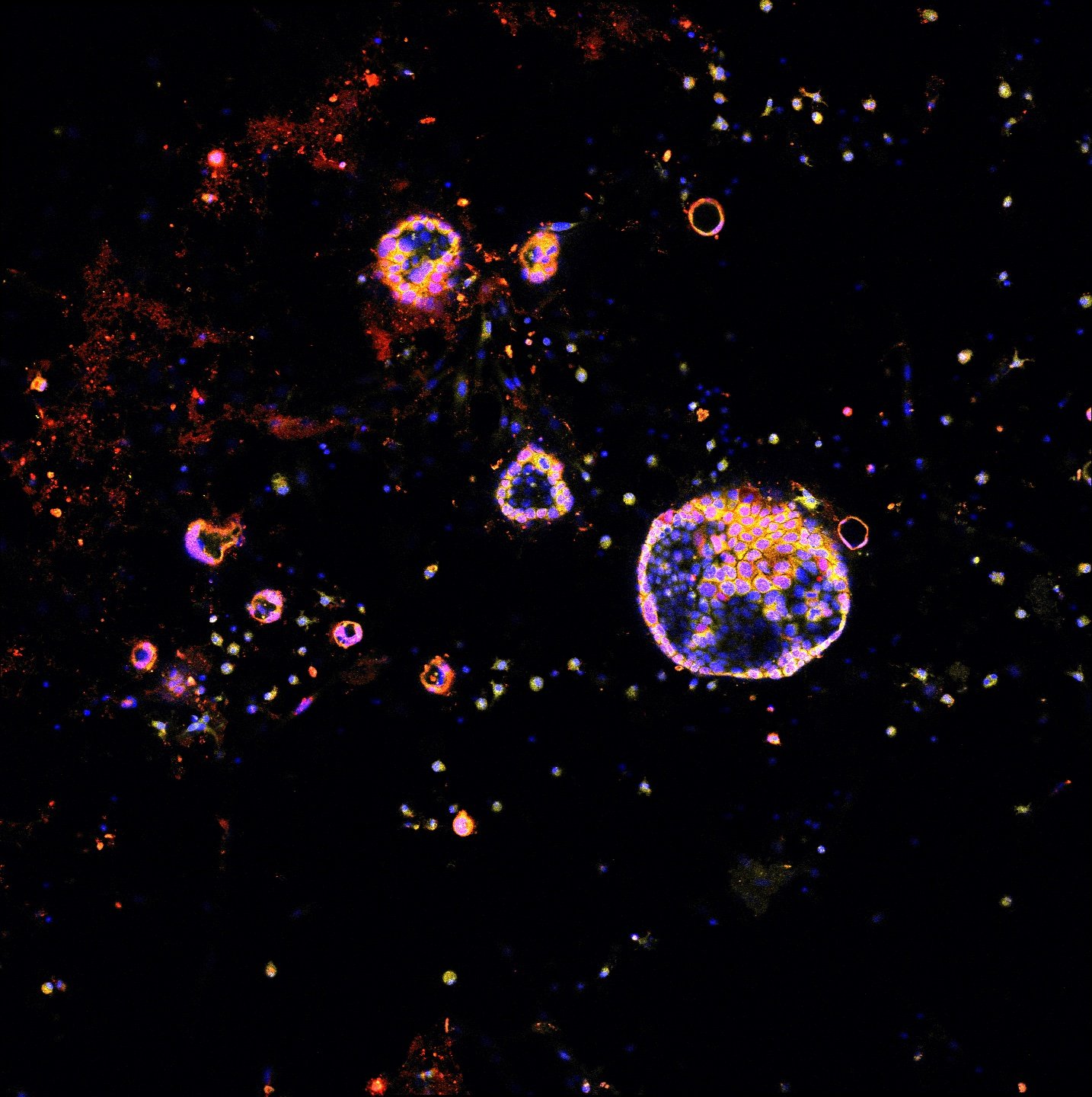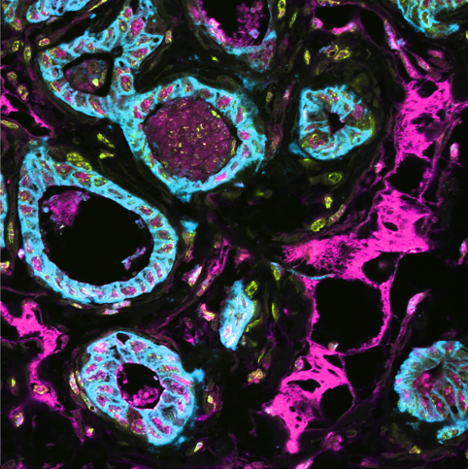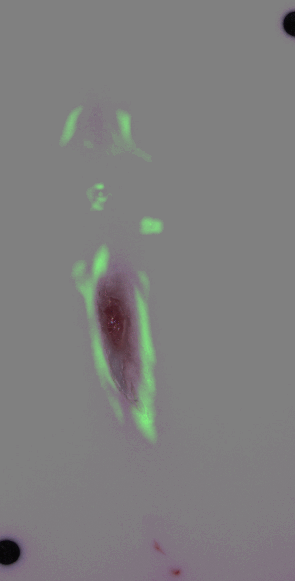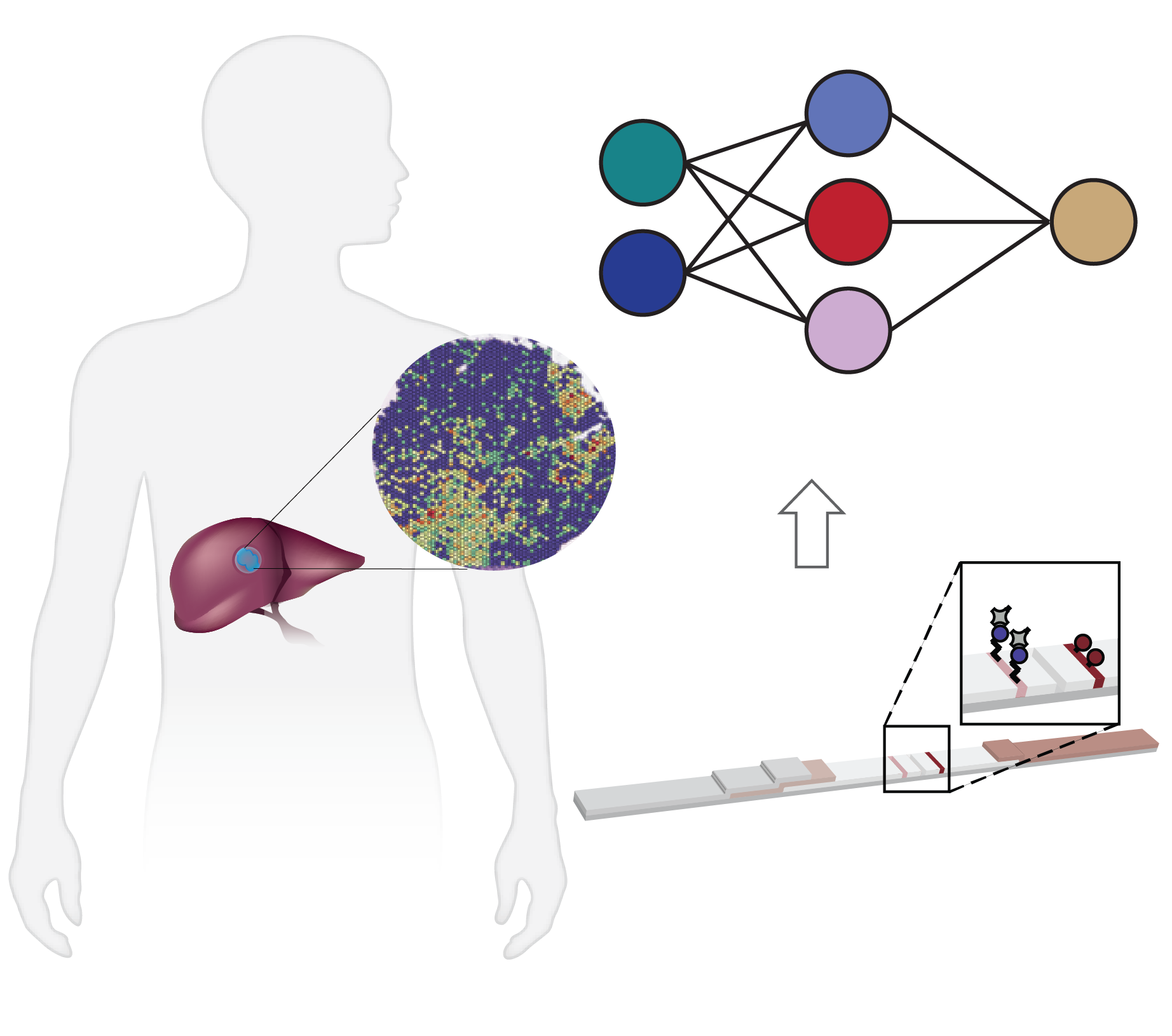







Point-of-Care Diagnostics
•
CRISPR Engineering
•
Next-gen Imaging
•
Spatial Multiomics
•
Synthetic Biology
•
Biomaterial Design
Point-of-Care Diagnostics • CRISPR Engineering • Next-gen Imaging • Spatial Multiomics • Synthetic Biology • Biomaterial Design

Our Mission
Integrating engineering perspectives and disease biology to improve healthcare with precision, adaptability, and portability.
Precision medicine has transformative impact in managing heterogeneous disorders including cancer, metabolic, and neurological diseases. At the living interface of precision engineering and health, the Hao laboratory will develop molecular and cellular tools to precisely track and control disease biology in intact organisms. Our specific research interests include (1) noninvasive disease detection and treatment monitoring at the Point-of-Care, (2) tissue-specific transcriptome engineering, and (3) multimodal systemic imaging. These projects will shed light on the dynamic interplay of diseased cells and their microenvironment. We seek to use these insights to address grand challenges of getting precision medicine into healthcare practice such as comorbidities, timely interventions, and access in low-resource areas.
-
Local alterations to the tissue microenvironment during disease provide engineering opportunities for precision diagnostics and treatment that will transform the patient care of heterogeneous disorders including cancer, diabetes, and neurological diseases. In response, synthetic, biological, and cellular agents have been designed to interrogate or control biological functions across the nano to micro length scales. Although disease progression and regression are tremendously dynamic processes, current studies are often constrained to inferring the dynamics of molecular transitions from static snapshot data lacking real-time information that could guide precise and evidence-based disease management. Therefore, there is a critical need to precisely track and control the dynamic and heterogeneous disease biology in intact organisms. To this end, we will integrate spatial-omics and high-throughput screening tools to develop platform technologies to study and exert spatiotemporal control over biochemical processes within multicellular tissues. We attempt to utilize such multi-dimensional information on disease progression and treatment response to enable rapid, noninvasive disease management at the Point-of-Care and rationalize the development of Next-gen personalized therapeutics.
-
Replacing or editing disease-causing genes holds great promise for treating many human diseases. High structural and functional precision of nucleic acids make them conceptually attractive as programmable therapeutic genetic modifiers. Synthetic nucleic acid agents exhibit strengths of potency, pharmacokinetics, cost and quality control, as compared with protein or cell therapy entities. However, despite their promise, achieving therapeutic efficacy with nucleic acid-based genetic modifiers in specific cells in vivo remains a major translational hurdle. To overcome such obstacle, our lab seeks to establish an in vivo strategy to evolve and stringently select: (1) delivery vehicles that enable specific delivery to desired tissues, and (2) functional precision of cargos that allows for potent therapeutic response. With new tools designed along these lines, we seek to therapeutically program RNAs and to functionally annotate noncoding RNAs (ncRNAs) as biomarkers or therapeutic targets.
-
Radiomics that provides actionable information on the presence, progression, and treatment response of disease has the potential to shift the paradigm of therapeutic management when combined with molecular diagnostics. Combining rapid biofluid analysis and optional imaging will guide interventions while eliminating unnecessary, invasive follow-up tests. Much of current imaging research into cancer and inflammation is largely based on in vitro and ex vivo methods with limited utilization of approaches that could lead to significant new insights of molecular changes in vivo. Herein, we aim to employ unbiased systemic imaging modalities to define ‘imaging biomarkers’ as indicators of the interventional efficacy in response to biological therapies along the molecular, probiotic and cellular scales.




